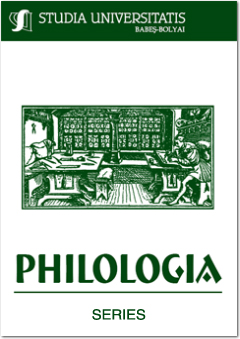LA SÉQUENCE CONSONANTIQUE /ST/ EN ITALIEN :UN SIGNIFIANT COMMUN AU DÉMONSTRATIF ET AU VERBE STARE
THE CONSONANT SEQUENCE /ST/ IN ITALIAN: A COMMON SIGNIFIER OF THE DEMONSTRATIVE AND THE VERB STARE
Author(s): Louis BegioniSubject(s): Language and Literature Studies
Published by: Studia Universitatis Babes-Bolyai
Keywords: Italian; phono-semantics; morphology; demonstrative; verb.
Summary/Abstract: The Consonant Sequence /st/ in Italian: A Common Signifier of the Demonstrative and the Verb STARE. In this study, we attempted to highlight the phono-semantic and morphological similarities of the -ST- consonant sequences present, on one hand, in the Italian demonstrative (QUE-ST-O- opposed to QUE-LL-O), where the opposition -ST- ~ -LL- marks the interlocutive differentiation (between the ME and the ME OUT), and on the other hand, in the lexical morpheme ST- of the verb STARE, in sentences where it can be replaced by the auxiliary ESSERE and in the Italian progressive form (STARE +-ndo Italian gerundive: sto mangiando ‘I'm eating’). In the case of the verb STARE, this sequence has a similar impact on the interlocutive persons. This probably bold assumption, at a linguistic and theoretical level, is based primarily on the study of the diachronic evolution of the demonstrative system from classical Latin to contemporary Italian and on the functioning of the verb STARE.
Journal: Studia Universitatis Babes-Bolyai - Philologia
- Issue Year: 56/2011
- Issue No: 3
- Page Range: 93-105
- Page Count: 13
- Language: French

